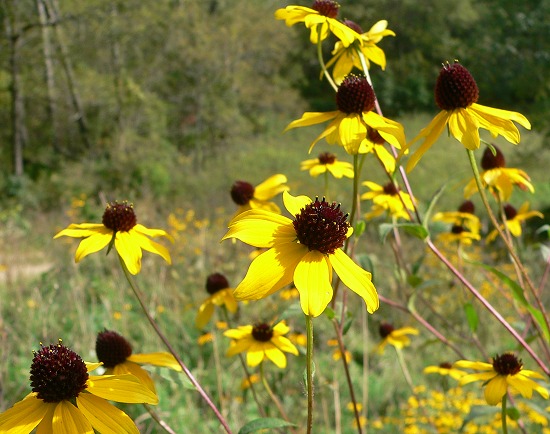This was another week when it seemed to change from summer into fall overnight. It was very warm for a few days with a strong south wind, then we had 2.5 inches of rain one night, and the next day the temperature started falling. We had to wear jackets and headbands for the first time this fall.
The hummingbirds are still here – still several at each feeder most of the time. Looking back at my records for past years, I suspect they’ll be gone by next week.
I’m still seeing some butterflies. There are a few Monarchs nectaring on the late goldenrods – Showy and Gray Goldenrod.

There are still Fritillaries in the prairies – mostly slightly battered Great Spangled Fritillaries.
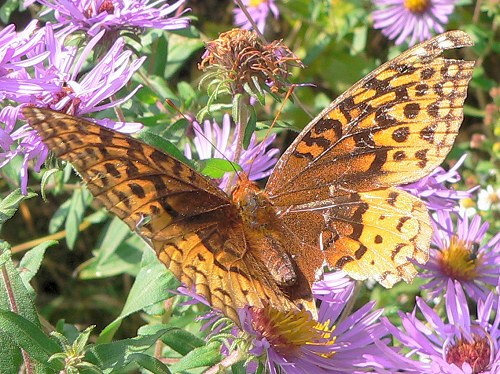
Most of these late Fritillaries are probably females laying their last eggs of the season. Female Fritillaries lay their eggs in the vicinity of violet plants, but often not actually on the plants. The caterpillars hatch and then live through the winter without eating until the violets begin to grow in the spring. The caterpillars are difficult to find – the only time I’ve seen one was on Rob’s prairie last spring when I found one on a Bird’s Foot Violet (Viola pedata).
Great Spangled Fritillary caterpillar on 5-8-2006.
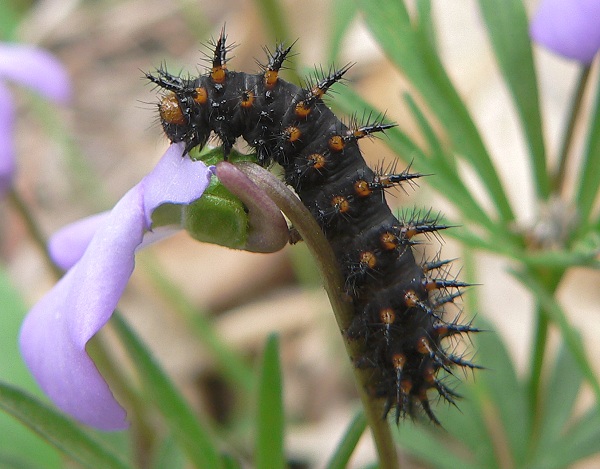
We’ve also been seeing a lot of Eastern Tailed Blues. Round-headed Bush Clover (Lespedeza capitata) flower heads are a favorite place for these butterflies to lay their eggs, so I often find caterpillars there, with their attendant ants.
Eastern Tailed Blue caterpillar on Round-headed Bush Clover
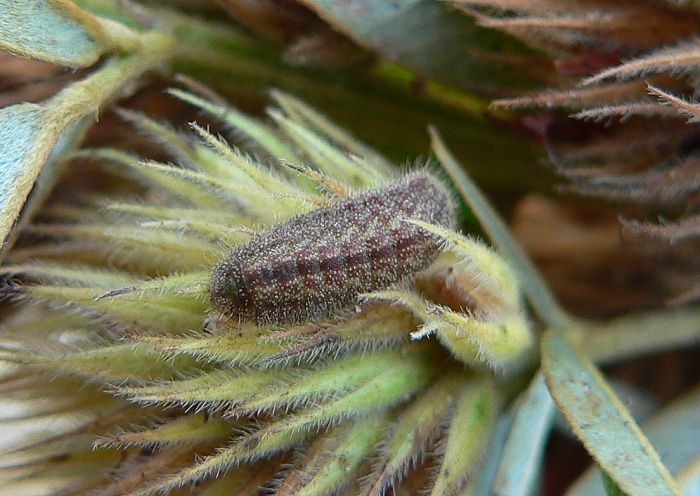
I’ve collected a lot of Round-headed Bush Clover flower heads this year – in preparation for collecting seeds out of them – and they’re spread out to dry inside our house. The caterpillars must continue to eat and make their chrysalises on the cut plants, because every day I find several newly hatched butterflies on the inside of our windows waiting to escape.
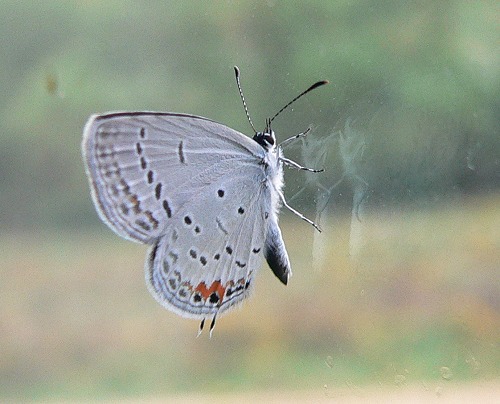
There are still plenty of frogs along the paths and in the wetland. Here’s a Pickerel Frog in a wet part of Center Valley.
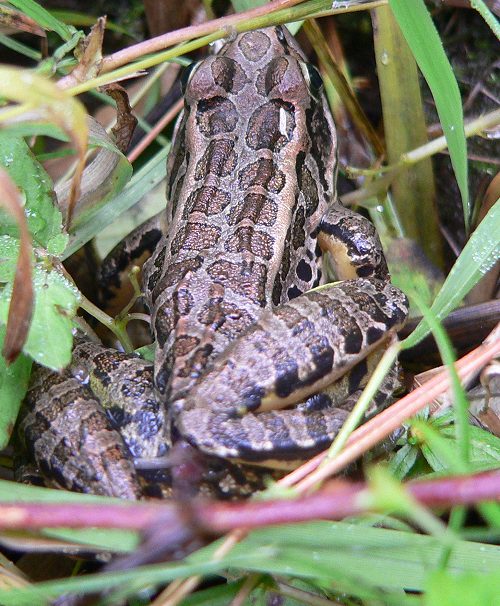
I found three new plants for our farm inventory this week, and two of them are new records for Buffalo County.
One new record for Buffalo County is Bog Goldenrod (Solidago uliginosa). We have a big patch of it in the sedge meadow. It has straight, slender flower stalks, and smooth leaves with slightly toothed edges.
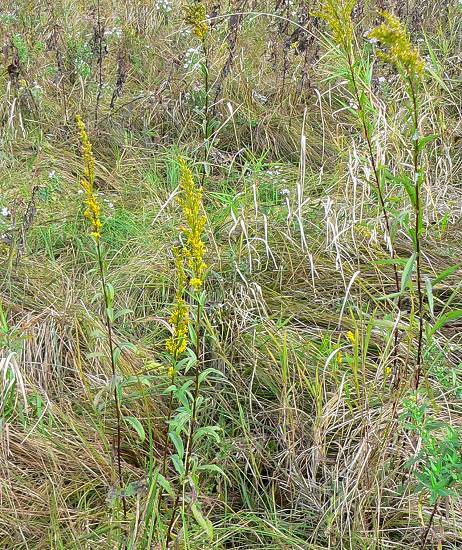
The other Buffalo County record is Biennial Wormwood (Artemisia biennis), which is native to the northwest U.S., but it’s been slowly spreading eastward and has been found in much of the rest of Wisconsin. It’s a tall plant with greenish, non-showy flowers.
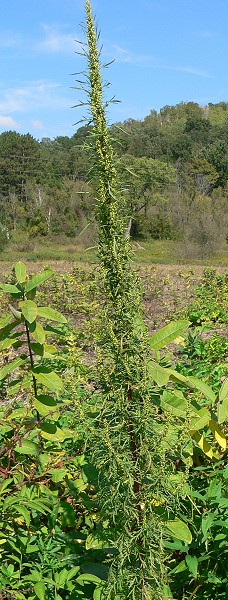
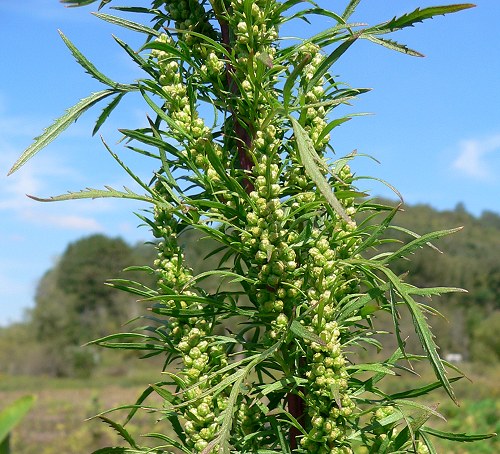
The third new plant is Arrow-leaved Tear-thumb (Polygonum sagittatum). I’ve seen it in the Buffalo River Valley, but not on our land before. It grows in wet places, and has tiny pink or whitish flowers and sprawling stems. The only disadvantage of having it around is that the stems have sharp angled bristles that catch onto clothes or skin when you brush against them.
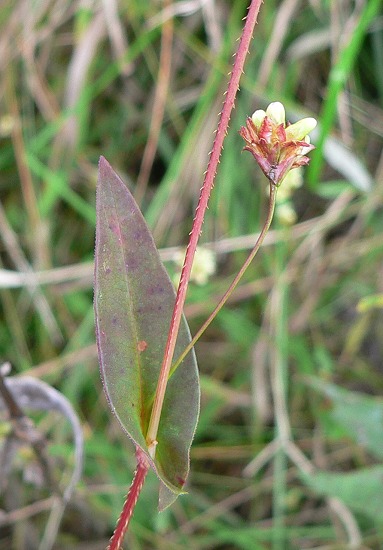
Flowers of Arrow-leaved Tear-thumb

All the rain we’ve had in the last few weeks has brought out the mushrooms in the woods. Here are two tiny, bright colored fungi that were growing in the woods next to the Knife Edge Prairie.
I think this is a Clavaria fungus – it’s called a Yellow Coral Mushroom.
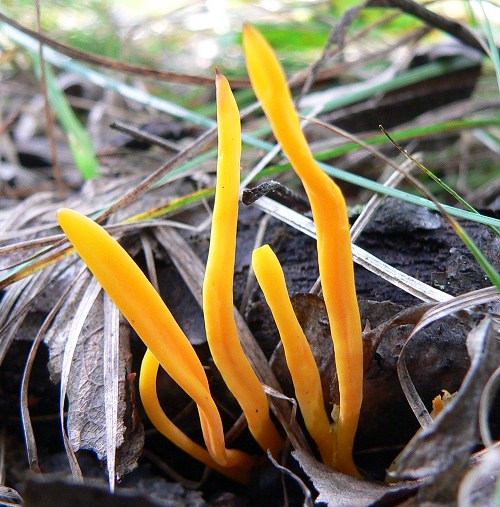
And I think this one is called Jelly Bellies (Leotia lubrica), because of it’s jelly-like texture.
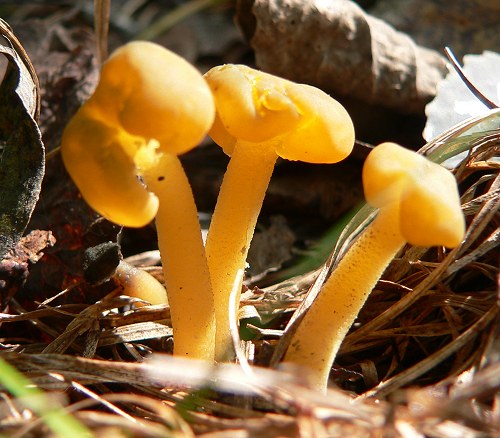
The animals use our mowed trails and I often surprise a bird or an animal when I’m walking or driving the gator along them. This is a Ruffed Grouse along the Cabin Trail.

The Fringed Gentians (Gentianopsis crinita) are in full bloom now. The first year we were here I collected seeds from the plants in our wetland and threw them into the low, wet part of Center Valley. Now they’re thriving there.
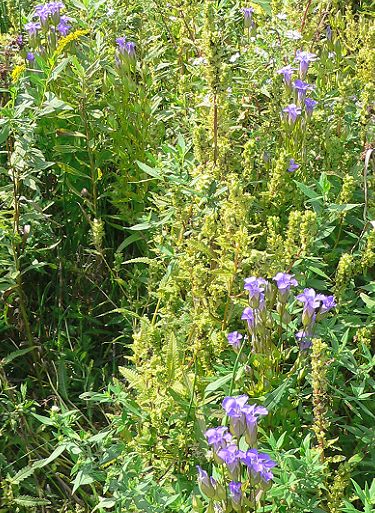
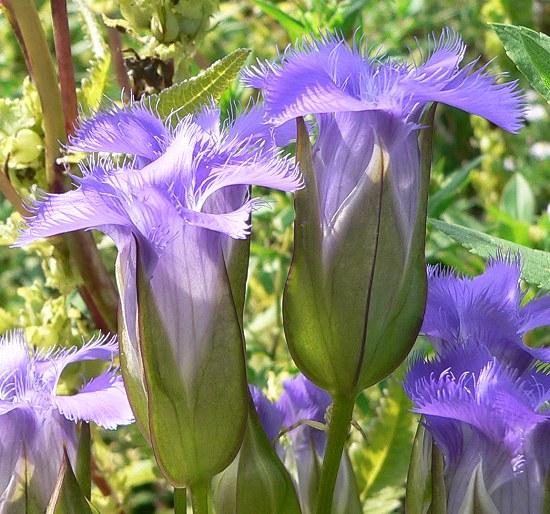

Brown-eyed Susans (Rudbeckia triloba) are blooming in all the lower prairies, and especially the prairies we planted around the house.
